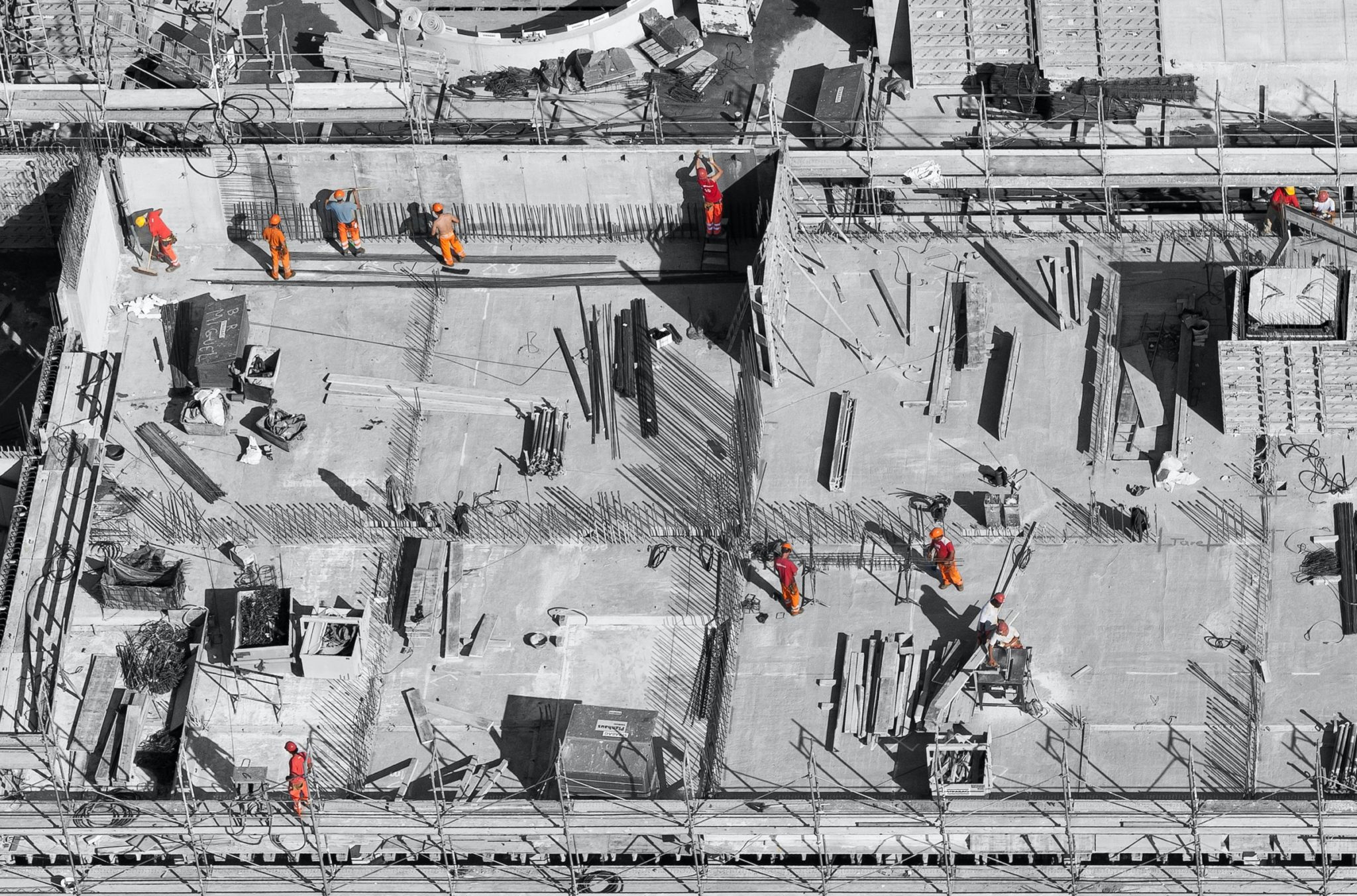According to the Oxford dictionary, to innovate means “to make changes in something established, especially by introducing new methods, ideas, or products.” Innovation is the action or process of innovating. Innovation inherently is something that hasn't been done before.
Why don’t we have more innovation in design and construction?
It seems that our industry dynamics make it very difficult for design and construction to innovate internally because there's a lot of downside to innovation and very little upside for designers or builders to push the envelope.
In this article, I discuss the different perspectives from the parties in a construction team on innovation in our industry.
The designer
Why would design professionals be opposed to innovation or investing in research and development? In construction projects, design firms, architects and engineers are typically reimbursed on an hourly basis. They get paid for their time, either based on hours billed with an hourly rate or a lump sum developed multiplying expected hours by hourly rates. Design firms do not get paid based on outcomes, they get paid based on hourly effort.
What is innovation in design and construction?
Let's say we are doing something that hasn't been done before to achieve a better result, whether it's the same value for a lower cost or increased value for the same cost. This could be a system that's more energy efficient, has lower long-term operating costs, but costs more upfront, or it could be something that may be built faster, like prefabrication or modularization innovations, but requires more work. The designer needs to figure out the best approach with the team.
Innovation also requires risk; the risk that the solution either doesn't work out for the client or the risk that the team is not happy with the final solution because it doesn't achieve the intended results.
As mentioned above, innovation inherently is something that hasn't been done before. There's a hypothesis, which requires work by the team to do the design, to do the coordination, to work with vendors, and then ultimately to permit and construct it, operate it and see if that hypothesis is achieved.
This implies that for a design professional, there are two concerns with innovation:
- They're not compensated for the hours that it takes to study the design. They need to invest a lot more time, especially if they are on a lump sum contract. They're going to invest more hours trying to coordinate and investigate something innovative, and they may not get compensated by the owner for that.
- They may not be able to achieve the intended result, which leaves the client unhappy with the finished product. This can be seen as an error or an omission that results in a lack of delivery performance and perhaps an insurance claim.
In one of my recent projects, I could see this happening when the team was looking at a radiant heating system for a new building. I was surprised at the amount of pushback from the design team about why not to use radiant heating until I started digging into it and asked about the benefits if the radiant heating system works perfectly.
A failure of the design could damage their reputation
For the design team, the biggest risk is that if the new system doesn't work. They would risk never getting asked for a proposal from that client again. A failure of their design could damage their reputation.
On the other hand, if the new system works perfectly, they get a thumbs up. Maybe they get the next job. But they could probably get a thumbs up and the next job without trying something new, without trying something risky.
In summary, for the design team, there is often little to no incentive, little to no return on their time to create an innovation. And there's often a significant downside if they're not able to deliver the innovation. I believe this is one of the primary drivers of why design teams are still hesitant with innovations and prefer to roll out stable, proven systems with a low risk to achieve the client's intended result. A good business strategy is to keep doing this as often as possible.
This isn't to say that some firms aren't really pushing the limits, but my general impression is that most design firms stay in their comfort zones when working on typical buildings, such as apartments, offices, hospitals, or manufacturing facilities. It seems to be the smarter business move to take the safe approach and not push the envelope and try to innovate.

Image: Scott Graham via Unsplash
The builder
Why would construction teams–whether it's a general contractor, or other trade partners, such as mechanical, electrical, plumbing–be interested in innovation? What would hold them back from pursuing and taking aggressive approaches to innovation on construction projects?
Let's look at how they get paid. A contractor typically gets paid a percentage profit on top of the cost of work. It can be either ‘open book’ where they submit all of their costs and they get a pre-negotiated percentage of the profit, or it's a lump sum where they provide a fixed amount (ie, $1 million or $5 million) to deliver the project. They estimate all of their labor and material costs upfront. They calculate what they want to make as a profit on that project and the total becomes the basis of the contract.
Innovation could answer one or all of these questions:
- What can all involved parties do to deliver this project faster and for less cost?
- How can we deliver something that's inspiring, while focusing on simple things that make the schedule go significantly faster?
- What are things that provide the same value or a comparable value to the owner but are significantly less costly?
If the ideas that result from these questions actually reduce the cost of the project, the contractor may be adversely affected. At the same time the value is increased, they are lowering the amount of profit that the contractor would make on the job. If the project is delivered faster, the contractor only keeps the savings if they are able to negotiate a lump sum first and not give a credit back to the owner for the saved time.
Less profit, more risk
Now, there's a nuance between a lump sum contractor, who introduces an innovation that reduces the cost and keeps the profit, after they have been awarded the job, and the owner who is going to accept the innovation and wants to see some kind of credit or adjustment to the contract price because the innovation differs from the initial contract.
When a contractor brings a solution to the table that delivers the job faster or for less money, they are reducing their profit. They are also potentially taking on more risk.
For example, if a builder tries a new prefabrication solution on a project, and it turns out that it doesn't work, they may have lost a lot of time, expended resources that they are not able to recover, and the client may not be happy with the end result.
There are essentially two aspects of innovation for the contractor:
- You make less money.
- You introduce a lot of risk because you're doing something that hasn't been done before.
As a result, our industry has a natural inertia to do things that have been done before, to do things that are proven successful.
Additionally, it seems that our industry accepts the durations and the costs it takes to create new buildings. There's not a true drive from owner organizations to find a way to reduce project costs and time. While we accept this, I believe it is possible to significantly reduce the time and cost to deliver projects without reducing quality.
The Supplier
In my opinion, the suppliers on a construction project are the ones that can benefit significantly from innovation. This innovation comes from investment in research and development and creating new solutions that will enhance a construction project. Even if these solutions fail initially, it is worth developing them further and keep trying to innovate because of the potential success for the supplier if a new innovation dramatically improves a project.
Examples of these innovations are:
- Products, such as air handlers or mechanical systems.
- A self-performed company that provides precast concrete structures to be assembled on site instead of cast onsite.
In other words, if these vendors can deliver their products for significantly less cost than the fixed industry price, they get to keep all of the benefit. They can improve their profit margins.
Patented processes provide competitive advantage
A supplier that offers precast concrete structures will also have a significant competitive advantage over other suppliers that still cast onsite.
If a manufacturer invents a new product, and they're the only company that sells that product, they have pricing advantage as well. They could charge for a premium product because they provide something that's significantly better than other solutions available.
In summary, suppliers who can deliver innovative products and develop patented processes to gain a competitive advantage, will benefit significantly from investing in research and development to come up with innovative ways to do things differently.
They will win over companies that are providing just labor or marking up the work of others and just providing coordination. Often these companies focus on marketing and branding to establish a competitive advantage because their offering isn’t actually differentiated from their competitors.

Image: Ricardo Angel Gomez via Unsplash
The Owner
Most people assume the owner is the ultimate beneficiary of an innovation on a construction project, as they invest the money and are the ones who eventually use the school, the manufacturing facility, or the hospital.
Owners will always benefit from innovative solutions that reduce the time to delivery, significantly increase the value of a building or reduce the cost of operating it.
However, in many cases, it is the project manager, not the entire business entity he is employed with, who is in charge of driving the project. A project manager usually deals with a tight budget on any individual project. For them, it doesn't make sense to invest money in research and development or trying something new because, if it doesn't go well, they will look bad, may not get promoted and could even be fired.
On the other hand, if they deliver something with consistent results–even if those results are not great–they have met the industry’s expectations. They have done their job. They continue to get new projects.
If it doesn’t work, it’s not my fault
I think there's an old saying that nobody ever got fired for buying IBM. Point being is that if you buy the respected blue chip company, if you buy the traditional system, then you don’t take a risk and, if it doesn't work, it’s not your fault.
But as soon as a project manager engages in something new, in pushing a team to deliver something in a different way, they risk losing their job if it doesn't go well. If it does go well, they get a pat on the back, a thumbs up, and are invited to work on another project.
But they might be able to achieve that anyway by not taking any risk and using traditional building systems, similar to a design firm.
Consequently, at a project management level, for the person engaging day to day on a project, there is not a lot of personal incentive to innovate. They won’t participate in any savings, if a project generates savings of $5 million, for example.
A holistic approach in project delivery
Looking at the owner’s organization, though, I would argue that owners do benefit incredibly from innovation. But in order to realize that innovation, they need to take a holistic, long-term approach to project delivery. They need to think of their entire book of work as an investment in project delivery, an investment in systems and in continuous improvement.
This holistic approach requires some standards. If owners don't standardize some of their work, they won’t get any kind of baseline to improve on. And if every project is looked at as a complete one-off, where all the focus is on the cost per square foot, I believe the owner will never choose the direction where they're going to benefit from innovation of time.
In summary
The current dynamics and structure of the design and construction industry are not set up to properly reward companies and individuals to do the necessary work for innovation and to take the risks that are inherent in trying something new that may not produce the intended outcome. With a short term view, trying new things doesn’t pay off and is actually risky. Without a long term view, investment in research and development doesn’t have a return on investment. Over the long term, it may have industry changing results…
Looking at all the reasons why designers, builders, and owners may not be clearly incentivized to push for innovation, it comes as no surprise that we haven't had significant innovation in the construction industry.
Does that mean innovation is not possible in design and construction?
Or does it mean that innovation might need to come from another source?
Stay tuned for my next article!
Feature image: Alex Wong via Unsplash
Related articles
Lean Enables Visionary Medical Hub Where Patient Care and Science Merge
Benefits and Challenges of Research in AEC
James is an expert in the set-up and structure of large, complex capital projects using Lean and Integrated Project Delivery to drive highly reliable results.
He has negotiated IPD contracts and delivered over $650M in complex healthcare projects as an Owner's Representative with multiparty contracts, aligned team incentives and collaborative delivery models.




